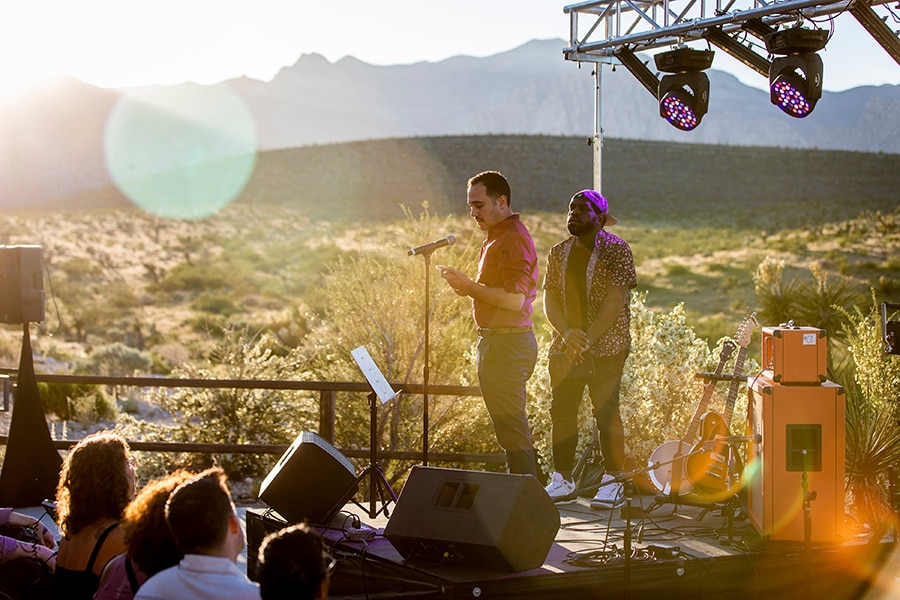
Las Vegas as a Literary Hub? You bet
Filled with a lineup of talent and crowds, Las Vegas has proven to be a literary hub
 Author Ahmed Naji reads onstage during the Believer Festival at Red Rock Canyon in Las Vegas, April 26, 2019. The third annual Believer Festival was just the latest sign of life for a burgeoning books scene in the desert.
Author Ahmed Naji reads onstage during the Believer Festival at Red Rock Canyon in Las Vegas, April 26, 2019. The third annual Believer Festival was just the latest sign of life for a burgeoning books scene in the desert.Image: Roger Kisby/The New York Times
LAS VEGAS — On a recent very warm Saturday afternoon, just a few blocks northeast of a string of ramshackle chapels offering Elvis-themed weddings on Las Vegas Boulevard, novelist Tommy Orange was discussing the critical reception given to “There There,” his polyphonic novel about contemporary Native Americans.
Orange was speaking at the third annual Believer Festival, three days of performances, panels and parties that are part of a growing literary scene here. As high-low splits go, it is a tough scene to beat.
With irregular regularity, various places in the United States that are not the Big Obvious Centers start throwing off a more concentrated number of cultural sparks: Austin, Texas; Seattle; Chapel Hill, North Carolina; Atlanta. Las Vegas might not seem the most obvious place to join this list. The Strip is still, and ever shall be, as Joan Didion described it, “bizarre and beautiful in its venality and in its devotion to immediate gratification.” But a recent infusion of money, people and The Believer, a literary magazine, have kindled an already present bookish community into a steadier flame.
The hub of this resurgence (or, to coin a term, surgence) is the Black Mountain Institute, a literary center that operates out of the University of Nevada, Las Vegas. When Joshua Wolf Shenk became executive and artistic director of the institute in 2015 — after the retirement of Carol Harter, who founded BMI in 2006 — he was not planning to also become editor-in-chief of a magazine. But soon after beginning his tenure, Shenk talked to The Believer, then published by McSweeney’s and based in San Francisco, about cooperating on a live event in Vegas.
Those talks grew into discussions about the institute, also known as BMI, buying the magazine, which was in a dormant phase as it tried to find a viable long-term financial model. A deal was finalized in early 2017.
Shenk said that defying what outsiders expect from Vegas was no longer what interested him most, but he and others continually admit that the juxtapositions can be hard to ignore. And one person’s very conscious fight against stereotypes has done much to fund the growth.
©2019 New York Times News Service

















